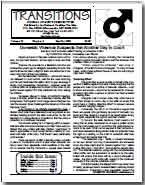Last week the Federal House of Representatives debated the Family Law Legislation Amendment (Family Violence and Other Measures) Bill 2011. During the debate, the Minister for the Status of Women, Kate Ellis, made a series of false statements to the Parliament and the Australian public.
Regretfully, this disregard for the truth follows a pattern of behaviour by state Offices for Women across the country. In August 2009 after a report by the NSW Bureau of Crime Statistics and Research, the NSW Office for Women’s Policy issued errata correcting three of fourteen incorrect and misleading statistics contained in its Discussion Paper on NSW Domestic and Family Violence Strategy. In August 2010, the South Australian Ombudsman issued a report finding that the SA Office for Women had published false and/or misleading information on the Don’t Cross the Line website, had failed to correct this information, and had failed to act with reasonable diligence and speed once errors were brought to its attention.
In what appeared to be an attempt to bring gender politics into a serious debate about an issue that affects the entire community, the Minister downplayed male victims of family violence by claiming that, “while it is true that men are more likely to be victims of violence [overall], this violence occurs predominantly at the hands of a stranger and in public places, such as the street or the pub, not at the hands of a family member, not at the hands of a partner, not at the hands of those they trust the most and not in their own home.”
The Minister is correct that Australian men are indeed more likely than women to experience violence at the hands of strangers and in public places. What she seems to be unaware of, however, is that this does not mean that men are less likely than women to experience violence at the hands of persons known to them, or in the home.
Additional figures only just released from the ABS Personal Safety Survey 2005 show there is no statistically significant gender difference between the prevalence rates for male and female victims of physical assault by known perpetrators in the last 12 months. They also show there is no statistically significant gender difference between the estimates of numbers of male and female victims who experienced physical assault by family members or in the home in the most recent incident in the last 12 months.


